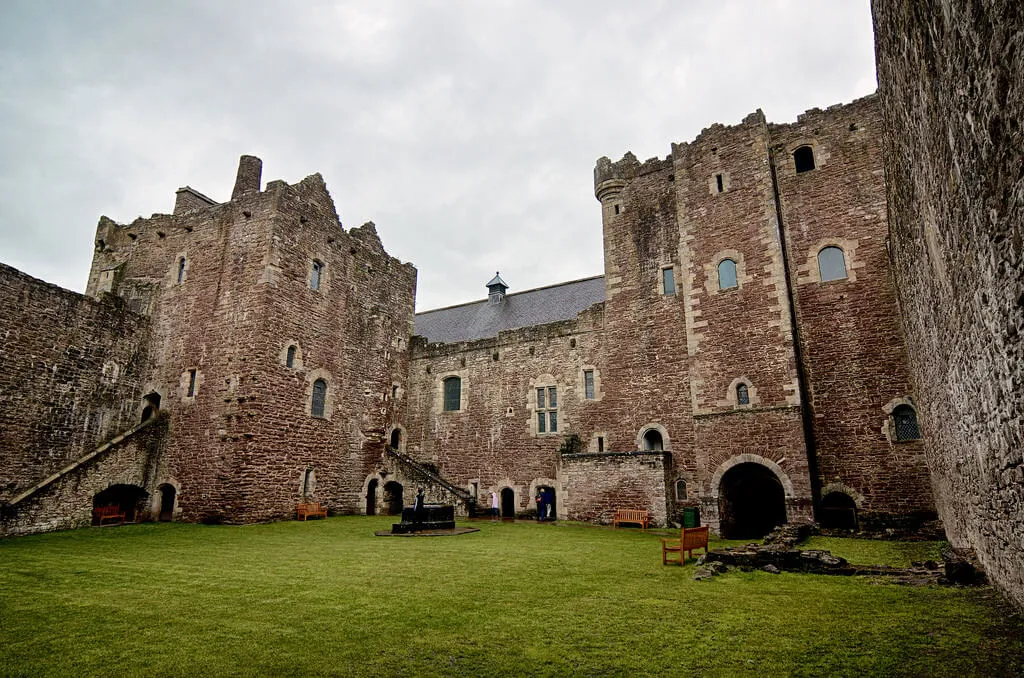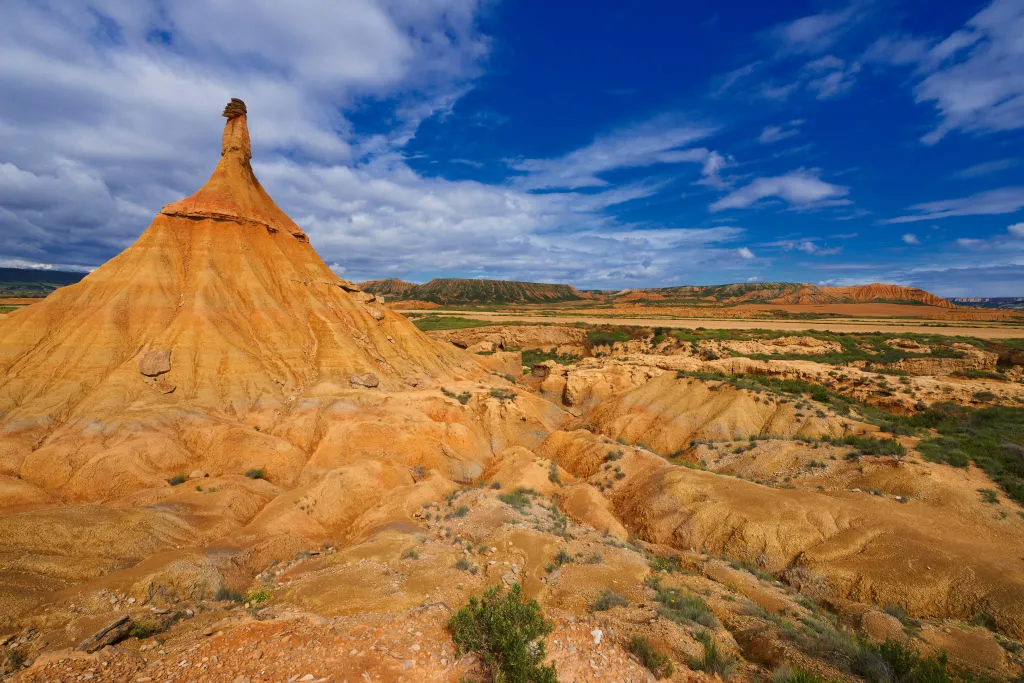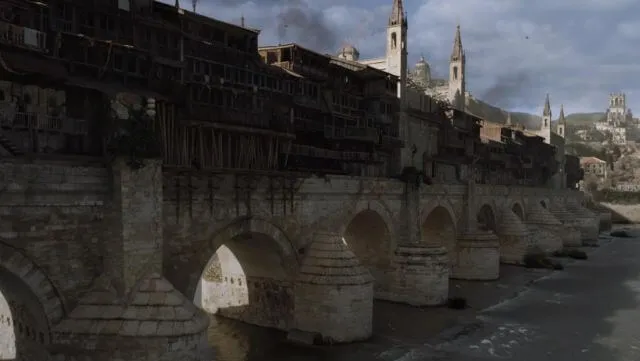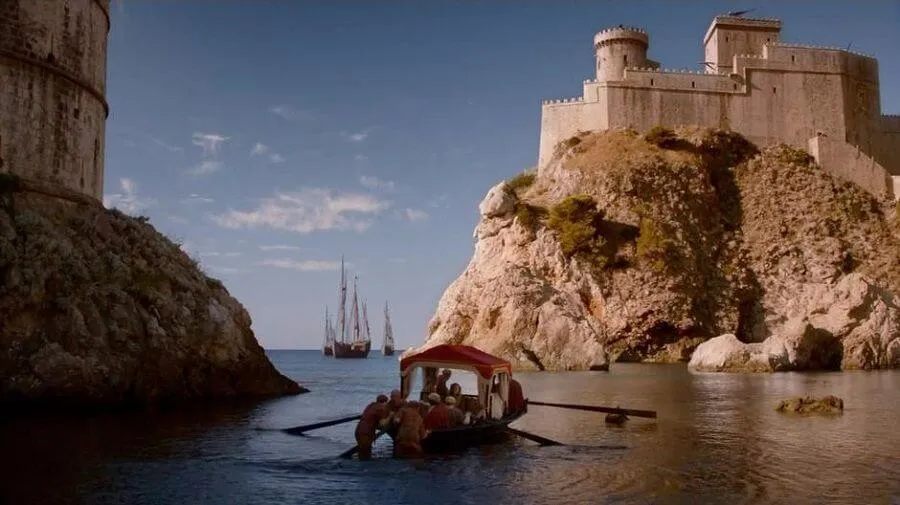These Real-World Game of Thrones Filming Locations Are Stunning
Winter has been coming for what feels like a century, and you can bet us Game of Thrones fans are getting wildly impatient. To quell our thirst for Stark family drama, have you ever thought of visiting one of the real-life locations behind Westeros' magical world? That's right: the gorgeous, sprawling hills and thick, enchanted forests are actual places that are only a plane ride away.
You can visit this handful of locations as seen in of Game of Thrones...if you so dare to venture into the world of the White Walkers.
The Kingsroad's Dark Hedges (Armoy, Ireland)

Kingsroad's Dark Hedges is absolutely enchanting, but this place wasn't a product of Hollywood trickery. It may be hard to believe, but Kingsroad is actually real… but might just be a little harder to visit than most of us anticipated.
Game of Thrones fans who want to see this wonder in real life won't be able to get there by car, but there is a way you can Kingsroad. See how to get there next.
You Can't Get To Kingsroad By Car

The real-life Kingsroad is actually called Bregagh Road and exists in Northern Ireland near the town of Armoy. Since its use in Game of Thrones, the Dark Hedges have become a massive, worldwide tourist destination. While you can absolutely visit, you, unfortunately, won't be able to get there by car.
On October 30, cars were permanently banned in order to protect the towering beech trees. Buses and coaches were also banned, and those breaking the rules can be fined up to £1,000 (roughly $1,250). However, if you happen to be cruising in on an agricultural or emergency vehicle, it's free sailing.
The Dark Hedges Are Considered A National Treasure

The BBC considers the Dark Hedges a national treasure. Just like the fictional road we saw on HBO, the trees have a storied history. James Stuart, whose family lived in gargantuan countryside mansion, Gracehill House, originally planted 250 trees along the entrance to his sprawling home.
Over the last 200 years, time has taken a toll on the Dark Hedges. Less than two-thirds are still standing. In 2016, Storm Gertrude badly damaged two of the trees, which caused them to completely collapse. An additional tree had a giant branch rot off, which blocked the roadway. If you manage to make the trip on foot (or hitch a ride on a tractor), you may be one of the last people to ever see the Hedges in all their glory.
Winterfell (Doune Castle, Doune, Scotland)

Winterfell is arguably one of the most recognizable places in Game of Thrones, but you might actually have recognized it from another film first. Doune Castle in central Scotland was the location of Camelot in Monty Python and the Holy Grail, probably because there are few places as authentically medieval.
The castle was originally built in the 13th century, where historians believe it was severely damaged in the Scottish Wars of Independence. It was rebuilt by Robert Steward, the Duke of Albany in the late 14th century, and used as a royal hunting lodge after his passing. Right now, the property is maintained by Historic Scotland – and you can absolutely take a tour.
The City Of Braavos (Bisbe Cartaña, Girona, Spain)

During Season 6, Arya Stark winds up at one of her lowest lows. She finds herself blinded after being mercilessly beaten by the terrifying adversary the Waif. She's left wandering the Braavos, begging for change on the street. Though we're admittedly pretty glad Game of Thrones isn't real (would we really want to live in the same world as the Waif?), the street Stark begged on absolutely is.
These bits were filmed in Girona, Spain on a street called Bisbe Cartaña. It's located in the Medieval Quarter behind Girona Cathedral. Game of Thrones uses Girona for numerous scenes, so much so that some travel companies even offer a Game of Thrones-themed tour through the city.
The Great Sept Of Baelor (Girona Cathedral, Girona, Spain)

The Great Sept of Baelor in King's Landing was the center of religious worship for the Faith of the Seven. This massive church was the largest single building in the sprawling Red Keep complex. It's also a very, very real place that’s gorgeously authentic in both architecture and use.
The city of Girona, Spain is a very popular filming location for Game of Thrones, so it shouldn’t be surprising that the Great Sept of Baelor, and the incredible, sprawling staircase in front the church is actually a real-life cathedral. Girona Cathedral is a storied building that actually breaks records with its gothic architecture.
Girona Cathedral Has Groundbreaking Architecture

You can see Girona Cathedral in the background of several scenes. In fact, it's the sole thing that places Braavos outside a manufactured, Hollywood set. Girona's cathedral is nothing less than an architectural feat – an unsurprising tourist destination for travelers that spans beyond Game of Thrones fans. The inside boasts the widest Gothic nave in the entire world, which is a whopping 72 feet long.
It's the second widest church behind the famed St. Peter's Basilica. Though most of the church has been redone over the years, the cloister and the bell tower are original pieces from the 12th century, making Girona's look authentically medieval and the perfect setting for an epic battle.
The Braavos Bath House (The Arab Baths, Girona, Spain)

Game of Thrones is definitely a fan of bathhouses, a traditionally medieval way to bathe (hello, it was before indoor plumbing). Strangely enough, this particular bathhouse in Girona, Spain wasn't actually used for bathing by any of the series' stars. Instead, the bathhouse is the setting of Arya Stark's battle against the horrific Waif.
The Arab baths were created in the 12th century for King Alfons I but were destroyed during the French invasion at the end of the 13th century. They were rebuilt between 1294 and 1296 and incorporated into the nearby convent in the 17th century. Today, tickets to browse the bathhouse's gorgeous rooms cost around €2 ($2.35 USD).
The Dothraki Sea (Bardenas Reales, Navarra, Spain)

Surprise! The Dothraki Sea, the sprawling sand and grass-covered fields in Essos, is a real-life place in Spain. We see the Dothraki Sea as a rather desolate wasteland when Daenerys Targaryen is rescued from the Mareen fighting pits by Drogon and gets stranded with hundreds of Dothraki soldiers. Truth be told, it's sort of similar in real life, even if the natural park it's in boasts some impressive wildlife.
The Bardenas Reales is one of Europe's only deserts and encompasses 100,000 acres of a natural park. The unique terrain and magnificent rock formations were created by the natural erosion of chalk, sandstone, and clay. It's the perfect, other-worldly place for Daenerys to get stranded.
The Mountains In The Dothraki Sea (Sierra Alhamilla, Almeria, Spain)

It's not just the desert of the Bardenas Reales that makes up the sprawling Dothraki sea. The gorgeous, sand-covered mountains that we so casually watch dragons whisk past are actually the Alhamilla Mountains in Almeria, Spain (basically, right next door to the Bardenas Reales). This location gets the best of both terrains to really give Essos character. The mountains are right between the Desert of Tabernas and Almeria's coast.
The Alhamilla Mountains are the perfect rugged, barren terrain to really test the characters in Game of Thrones, but in real life, it's actually a gorgeous rural vacation spot with plenty of outdoor activities including cycling trails and mountain climbing. As a protected natural area, the wildlife is stunning.
The Dothraki Sea Is Also A Major Military Zone In Real Life

It may be nice to visit the Bardenas Reales in real life and enjoy the nature reserve, but prepare for it to be crazy loud. It may be miles away from civilization, but it's one of the most booming military zones in all of Europe.
“It may be a Natural Park and a Unesco Biosphere Reserve, but right in the middle of it, fenced off behind warning notices, is the biggest military zone in western Europe,” explained Michael Kerr, a journalist who visited the area for Telegraph Travel. “Fighter planes roared in from the left and broke the sound barrier to our right as we walked one of the paths in El Plano, red clay, dampened by a recent shower, sucking at our boots.” It's not such a friendly terrain, regardless of if you're a Targaryen or a regular human being.
Tower of Joy (Castle Of Zafra, Guadalajara, Spain)

On the northern edge of the Red Mountains of Dorne rests the Tower of Joy, the birthplace of the brave (and extremely attractive) Jon Snow. The Tower of Joy was also the location of the final fight the Robert's Rebellion civil war, which lead to the collapse of the Targaryen dynasty. It's an important piece of history for Game of Thrones, but it's also totally real tower that you can visit in real life.
The Castle of Zafra is impressive, standing at an altitude of 1,400 meters on a crop of sandstone in Guadalajara, Spain. It is the only building for miles around.
The Castle of Zafra Is A Greater Real Life Fortress Than Its Game of Thrones Counterpart

The Castle of Zafra is stronger than the actual Tower of Joy. It was built in the 12th and 13th centuries as a fortress that was taken over by King Fernando III in the 13th century and remained unconquered until the 15th century.
Over the years, Zafra castle became less useful as a fortress and began to crumble. It's since been restored by its owner and you can actually visit if you can figure out the logistics. The castle is isolated and too far away to hike, so you'll need to drive on a dirt road from the village of Hombrados, which is about two and a half hours away from Madrid.
John And Ygritte's Love Nest (Grjótagjá Cave, Iceland)

In Season 3 of Game of Thrones, Jon Snow finally sealed the deal with Ygritte in a passionate love scene that took place in a thermal pool. What better setting for such a romantic love scene than inside a secluded, volcanic cave in Iceland.
John and Ygritte's love nest is located in a natural hot spring known as Grjótagjá, a secluded cave pool that you might be able to swim in if the temperature is just right. Grjótagjá is located right next to Lake Mývatn, a really popular tourist destination that's been a bathing spot for all of recent (and not-so-recent) history.
Grjótagjá Is Heated By Volcanic Activity And The Home Of An Outlaw

While Grjótagjá is definitely hot, it's almost always the perfect temperature for warming up in the frozen snow of Iceland. That doesn't mean it can't rise to deadly levels, so you might want to check before you dive in. In 1975, swimming at the cave pool was banned during the start of a volcanic eruption. The water's temperature spiked because of the rising lava flows, and it wasn't safe. Though the temperature is somewhat volatile, lately it's been dropping.
Though the cave has been commonly used as a bathing spot, it was once occupied by 18th-century outlaw Jón Markússon while he was on the lam.
Long Bridge of Volantis (The Roman Bridge, Cordoba, Andalusia)

Located in the Free City of Volantis, the Long Bridge crosses the Rhoyne River just before it opens up into the Summer Sea. In the series, the bridge is so large that it's lined with buildings as if it's an actual neighborhood. Pretty impressive, right?
In real life, the bridge is still grand, but slightly less so. The real-life location, the Roman Bridge in Cordoba, Andalusia, was built in first century BC completely out of wood. It spans 247 meters and has six arches, but Game of Thrones used various drone shots to make it look longer and wider.
Yunkai and Pentos (Aït-Ben-Haddou)

Both Yunkai and Pentos play important roles in the series. Pentos is Daenery's home and neighbors the city of Yunkai where she embarked on a massive attack. Considering their proximity in the series, it's unsurprising that both locations are actually in the same place. The setting is a unique fortified village between the Sahara and Morocco called Aït-Ben-Haddou.
Aït-Ben-Haddou is a UNESCO World Heritage site just 100km southeast of Marrakech. It's been routinely used as a location in Hollywood films like The Mummy, Gladiator, and Babel since the '60s probably because of the city's unique architecture.
The Red Keep (Lovrijenac Fortress, Dubrovnik, Croatia)

The Red Keep is the iconic palace inhabited by the King of the Andals and the First Men, his family, the court and those people who work for them. In real life, the Red Keep is in the Croatian city of Dubrovnik – at least the exterior. The interior is shot in Malta, but the fortress can be seen in the Battle of Blackwater, which is shot right in the bay right beside it.
In real-life, tourists regularly enjoy the fortress because it's actually a theatre. Shakespeare's Hamlet was performed during the Dubrovnik Summer Festival. It also hosted a production of Midsummer's Night Dream in July.
The Interior Of The Red Keep (San Anton Palace, Malta)

To shoot the grounds of the Red Keep, film crews left Croatia and headed to Malta, where they filmed scenes in San Anton Palace. San Anton Palace is the home of Malta's President and has a storied history of wealth and political importance. It was built in the 17th century for a knight of the Order of St. John named Antoine de Paul, but this was just his country home.
Though you might be busting into the president's house anytime soon, the expansive gardens surrounding the property have been open to the public since 1882. Some of the trees in the garden are a whopping 300 years old.









